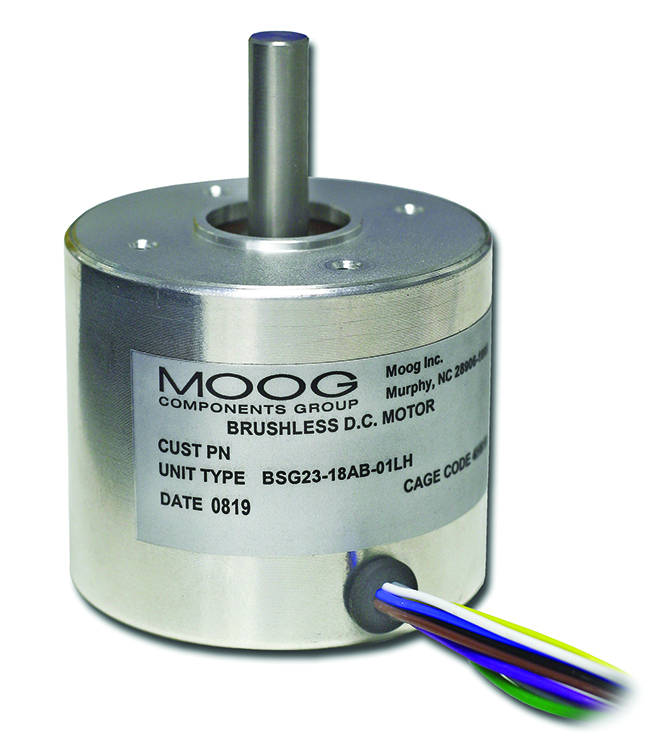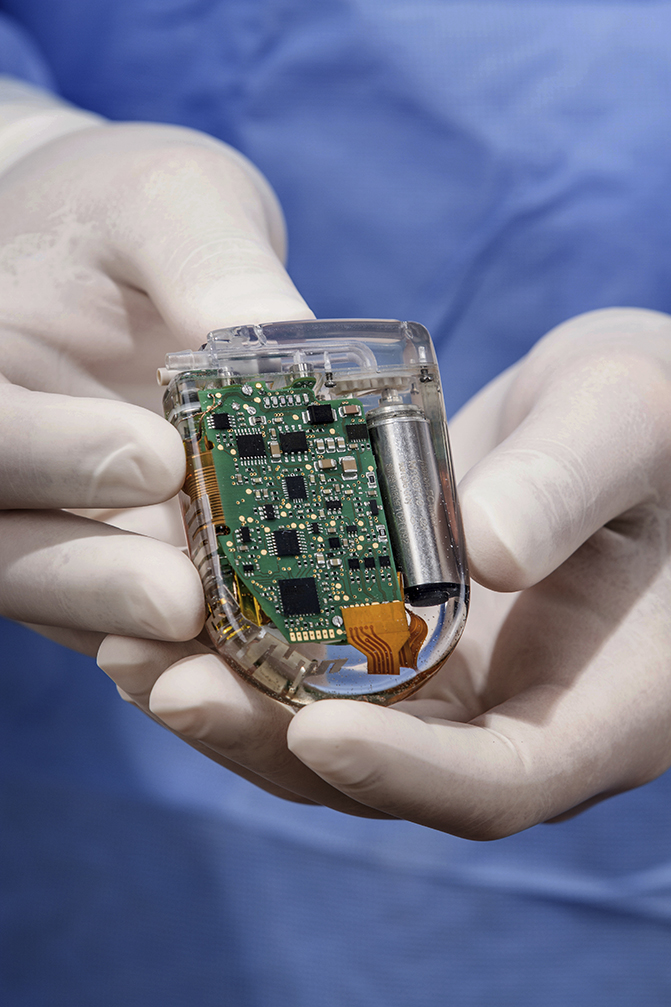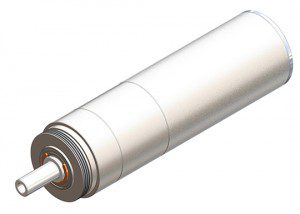There’s a general consensus that the medical industry currently looms largest for innovation in electric motors. That’s what many industry experts we recently interviewed told us.
Here, the trend is towards designs that are smaller, lighter, more efficient and cheaper.
“The need for portable medical devices is being driven by a more mobile aging population who need machines such as portable oxygen concentrators … where long battery life and light weight is a must,” said Robbie Queen of Moog Components Group.
For non-portable devices, the medical device tax, shrinking Medicare reimbursements, and Asian competition are driving prices down and spurring change in the way motors for these applications are designed and manufactured.
This article is one in a multi-part series covering the most recent trends in motions designs relating to electric motors. Here are other installments:
Updated: Trends in electric motors Part I — Miniaturization, connectivity, and customization
As the FDA has placed more stringent requirements on medical-device manufacturers to control and monitor second and third-tier suppliers, there’s been more regulatory scrutiny on motor manufacturers as well. So now, they’re incorporating more process controls into their design processes.
 “10 years ago it required a cell phone, PDA, and GPS to accomplish even just the basics of what smartphones do today,” said Brandon Steinberg, regional business development manager of North America for Portescap. “This is true for many medical products, too. Both patients and hospitals don’t was to buy, store, or maintain anything more than necessary.”
“10 years ago it required a cell phone, PDA, and GPS to accomplish even just the basics of what smartphones do today,” said Brandon Steinberg, regional business development manager of North America for Portescap. “This is true for many medical products, too. Both patients and hospitals don’t was to buy, store, or maintain anything more than necessary.”
From a motor-design perspective, this requires miniaturization, increased efficiency to run multiple components on the same small battery, and sophisticated customization so that multiple functions may be performed using a single drive motor, added Steinberg.
Others are seeing a similar increase in medical applications where they’re required to qualify production lines and test equipment to meet medical quality standards. That’s according to Jim McNamara, BEI Kimco senior applications engineer.
Quieter motors are better for patients
 Increased use of motorized systems in the operating room has brought about demand for quieter low-voltage electric motors, according to John Morehead, national sales manager at Crouzet Motors and Crouzet Automation, brands of InnoVista Sensors. “For example, peristaltic pumps present in a variety of applications in the OR, but aren’t inherently quiet … and when driven by typical brush dc motors, can become quite noisy. That’s especially true when multiple units are in operation,” he added.
Increased use of motorized systems in the operating room has brought about demand for quieter low-voltage electric motors, according to John Morehead, national sales manager at Crouzet Motors and Crouzet Automation, brands of InnoVista Sensors. “For example, peristaltic pumps present in a variety of applications in the OR, but aren’t inherently quiet … and when driven by typical brush dc motors, can become quite noisy. That’s especially true when multiple units are in operation,” he added.
To solve this problem, Crouzet Motors now sells DCmind Brush motors that are whisper-quiet at 35 dBA … and finding rapid acceptance in the medical field.
“Thanks to proprietary processing that gets this low noise level, the brush motors are more than 80% efficient and offer an average service life in continuous duty between 24,000 hours at no-load and 5,000 hours at rated load,” said Morehead.
In powers up to 209 Watts (1/4 hp), the DCmind Brush motors come with quiet planetary and worm gearing and IP65 environmental protection standard (IP69K optional). Accessories include a holding brake and optical or Hall-effect encoders.
Mixed bag forminiaturization of electric motors
Miniaturization and customization are major design objectives these days … common in the medical-device industry and elsewhere.

According to engineers at maxon precision motors, that’s especially true because the medical and robotics market is continuously looking for smaller, more efficient, more specific and more-intelligent drive systems. They cite a new program of configurable high-speed brushless dc motors to serve these markets.
In fact, all industries are spurring development in motors to increasing torque density.
As far as electronic hardware is concerned, one obvious change in motion is the miniaturization of products by virtue of efficiency gains and miniaturization in electronic components.
That’s according to Scott Evans, director of product strategy at Kollmorgen.
Consider how maxon engineers are currently designing motors for an array of implantable pump systems. 10 years ago, it would have been impossible to deliver the required power density and reliability with motors sufficiently small … just a few millimeters in diameter in c=some cases. Now though, there are an array of motors to satisfy these technical, environmental as well as regulatory demands.

The main driver behind this is consumer electronics, because that is where the real volume is, according to Evans. Even so, industries such as medical andaerospace and defense are driving the adoption of technologies borrowed from consumer electronics. Consumer electronics also continues to drive down component cost, making sophisticated products increasingly affordable.

“We are seeing a demand for cannulated gearmotors that wasn’t present 10 years ago,” noted Danielle Cyr, Product Manager at Portescap. See the related post, New brushless DC slotted mini motors for surgical tools sterilizable, high-speed high-torque. A cannulated gearbox and motor combination is a design that (among other things) allows for in-line driving of pins and Kirschner wires (K wires) used in orthopaedic surgery.
“Customers who design orthopedic drills, for example, are finding there are significant benefits to using a cannulated gearmotor in the design of their products; this design lets customers place the motor in-line with pins or k-wire, decreasing overall design weight and size,” Cyr added.
But the trend towards miniaturization is not universal.
“Miniaturization has not been required or even desirable in our field of expertise, although our conversion to surface-mounted components rather than through-hole designs has greatly improved overall quality and failure rates,” said Will Delsman, inside and technical sales manager at NK Technologies.
“We’ve designing new products with more features and capacity to fit in our standard product housings,” he added. One unmet need in industry is the monitoring of greater amounts of current without separate components— current transformers or Hall elements inside magnetically permeable rings, for example. “Here, we’ve developed large split-core models of current relays and transducers to reduce installation time and provide the simplicity of one-piece, non-intrusive sensors for which we are known,” said Delsman.

Efficiency requirements even for smaller electric motors
One dominant trend in all motor technology is a move to designs with higher efficiency and power density. Department of Energy (DOE) energy-efficiency requirements have spurred improvements in ac-induction motor efficiencies in models from 1 to 500 hp. Requirements for many have stayed at IE3, but myriad U.S., European, and Brazilian motor manufacturers have adopted brushless permanent-magnet motor types to get IE4-level efficiencies. In fact, even fractional-horsepower motors must have higher efficiencies than in the past.
What’s more, compact designs are demanding better efficiency even where regulations don’t mandate it.
“On motors, we are seeing more applications using batteries as power needing higher-efficiency motors,” said McNamara. His company is seeing more applications that need efficient and more precise movement from voice-coil actuators as well.
Compact direct-drive linear motors are another option for energy savings. Widely leveraged in Europe, linear motors are still uncommon in the U.S. “That’s changing though, thanks to the way in which designs such as tubular linear motors provide return on investment,” said Zafiro at LinMot. That’s in the form of reduced energy consumption … especially useful in the packaging industry for pick-and-place tasks.
Consider how efficiency is a key factor in drone applications. BEI Kimco specializes in custom motor and actuator part sets that are integrated in customer applications. A common reason to use parts sets is to make the end item smaller. Over the last ten years BLDC motors are more common than ever … and according to McNamara of BEI Kimco, where efficiency is a must, BLDC is the winner. Moving magnet and moving coil voice coil actuators have evolved to where we have housed versions of both types with integrated sensors.
Another way motors are boosting design efficiency is by continuing to replace fluid-power options.
“Robotic automation is adopting more power transmission, especially grippers, which are converting from pneumatic to electric operation,” said Dave Beckstoffer, product manager in sales at Portescap. Electric grippers provide a higher level of control over pneumatic grippers, as motor technology is easier to control than air. Moving to fully electric grippers eliminates the need for air hoses for more freedom of movement … which lets engineers automate additional processes later, Beckstoffer added.
Related articles on trends in motor technology
Updated: Trends in electric motors Part I — Miniaturization, connectivity, and customization
Updated: Trends in electric motors Part V — Research laboratories drive technology convergence


Leave a Reply
You must be logged in to post a comment.